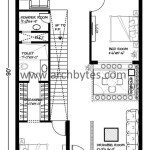Essential Aspects of an Emergency Action Plan Example
An emergency action plan (EAP) is a critical document that outlines the steps to be taken in the event of an emergency. It helps ensure the safety and well-being of employees, visitors, and the general public. This article will discuss the essential aspects of an EAP example and provide guidance on creating an effective plan.
1. Scope and Objectives
The EAP should clearly define its scope and objectives. This includes the types of emergencies covered, such as fires, earthquakes, or hazardous material spills. It should also state the desired outcomes of the plan, such as minimizing injuries, protecting property, and maintaining business continuity.
2. Emergency Response Teams
The EAP should identify and assign responsibilities to emergency response teams. These teams may include an evacuation team, a communication team, a medical team, and a security team. Each team should have clear roles and responsibilities.
3. Communication Plan
Effective communication is crucial during an emergency. The EAP should outline a communication plan that includes methods of reaching employees, visitors, and the public. It should also provide contact information for key personnel and emergency services.
4. Evacuation Procedures
The EAP should establish clear evacuation procedures for all areas of the facility. These procedures should include evacuation routes, assembly points, and procedures for assisting individuals with disabilities.
5. Shelter-in-Place Procedures
In some cases, it may be necessary to shelter in place rather than evacuate. The EAP should include procedures for securing the facility, maintaining communication, and providing essential supplies.
6. Medical Emergency Procedures
The EAP should include procedures for handling medical emergencies, including first aid, CPR, and the use of an automated external defibrillator (AED).
7. Training and Drills
Regular training and drills are essential to ensure the effectiveness of the EAP. Employees should be trained on the plan and their specific roles and responsibilities. Drills should be conducted periodically to test the plan and identify areas for improvement.
8. Plan Maintenance and Review
The EAP should be reviewed and updated regularly to ensure it remains current and relevant. It should also be distributed to all employees and posted in prominent locations.
In conclusion, an effective EAP is an essential tool for managing emergencies. By following these essential aspects, organizations can create a comprehensive plan that protects the safety and well-being of all individuals involved.

Emergency Management Plan Template Luxury Action Diving Templates R Plans Response

Ohs Resource Portal Emergency Response Planning Template Package

Free Emergency Action Plan Templates Safetyculture

Emergency Action Plan Go2hr Worksafebc Safety Basics

Emergency Action Plans Korey Stringer Institute

Emergency Action Plan Template Kapnick Insurance Group

Osha Emergency Action Plan Template Beautiful Sample Plans Response Evacuation
Emergency Action Plans

Emergency Action Plan 10 Examples Format

Printable Emergency Action Plan 26 Examples Format








